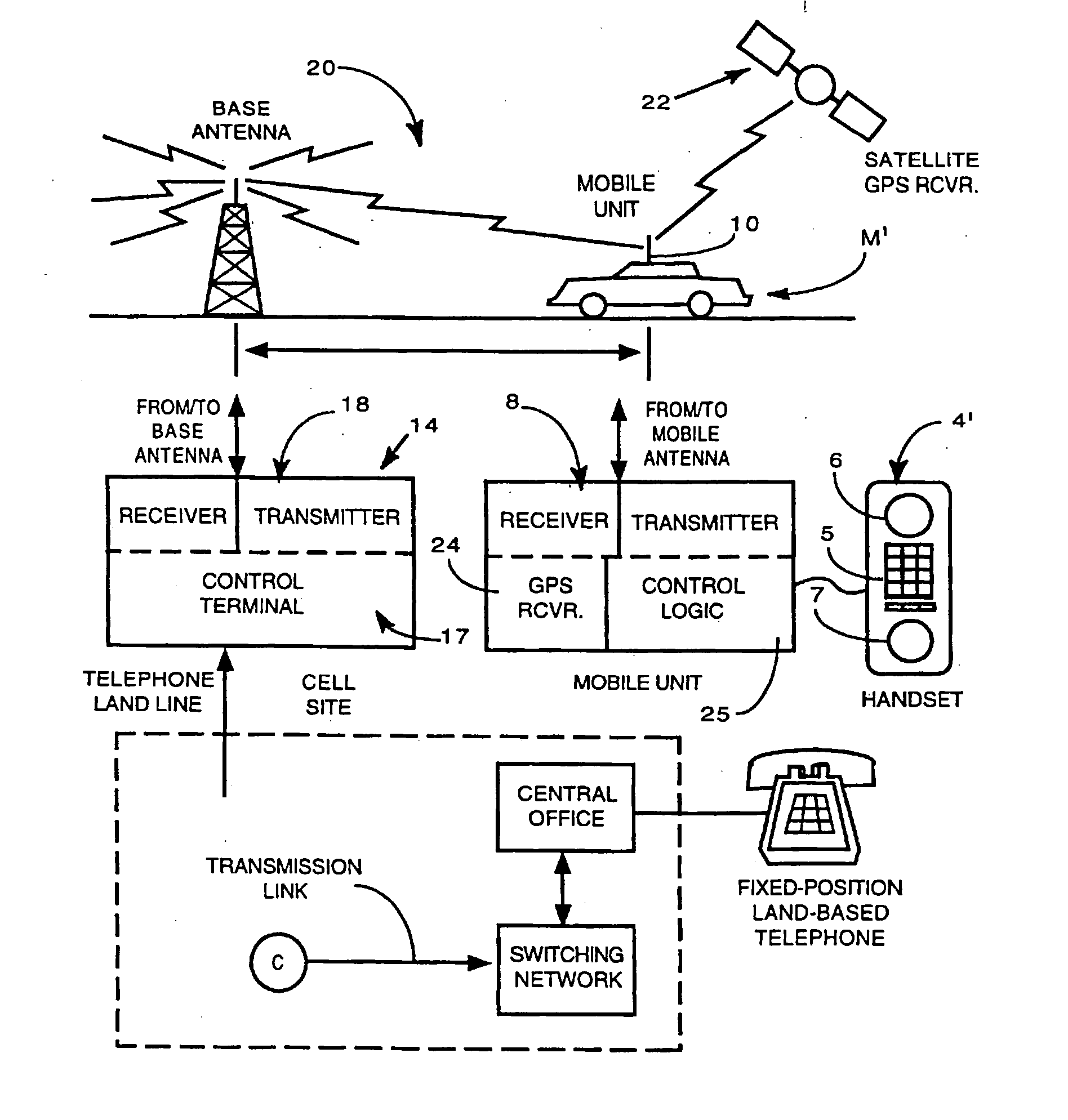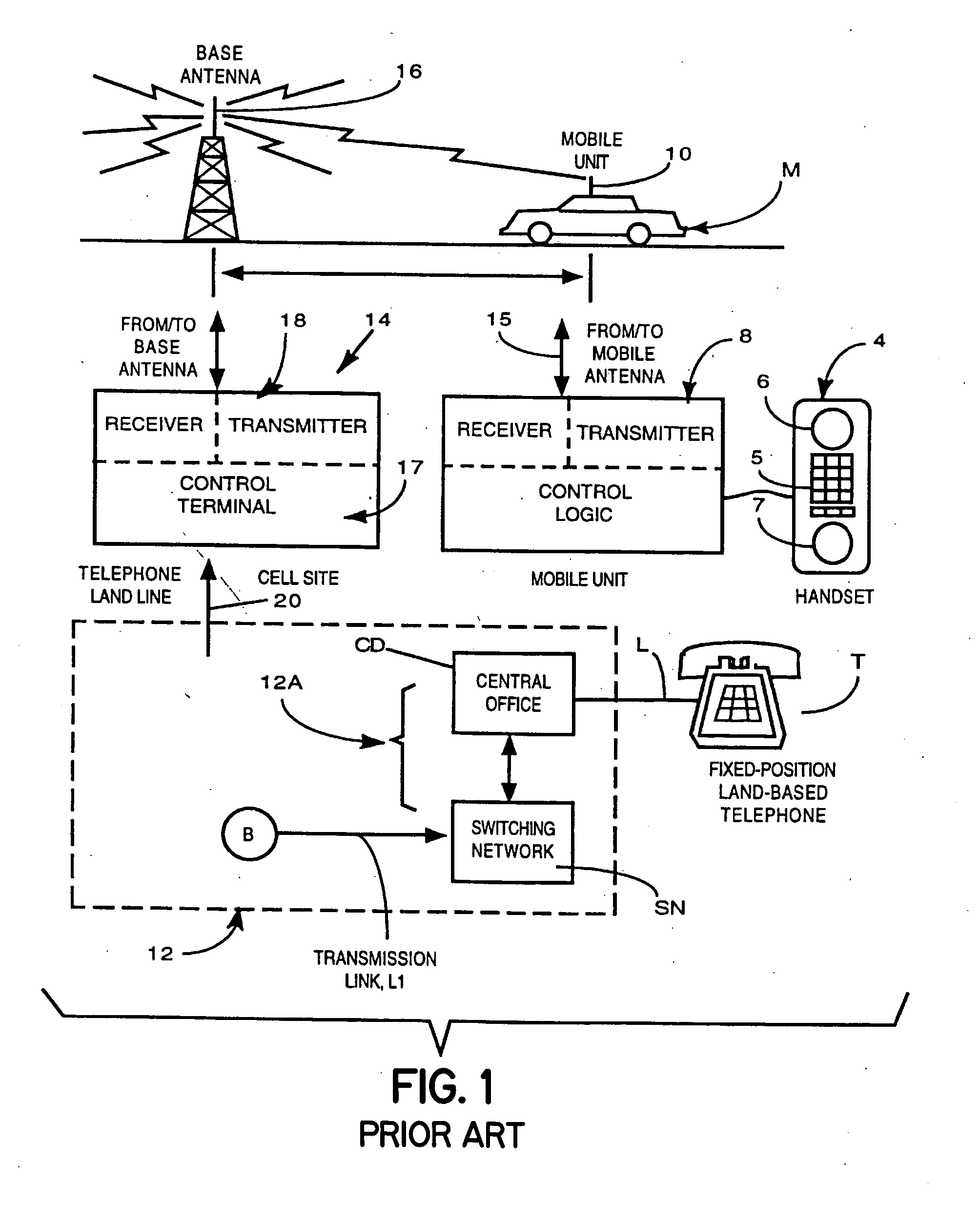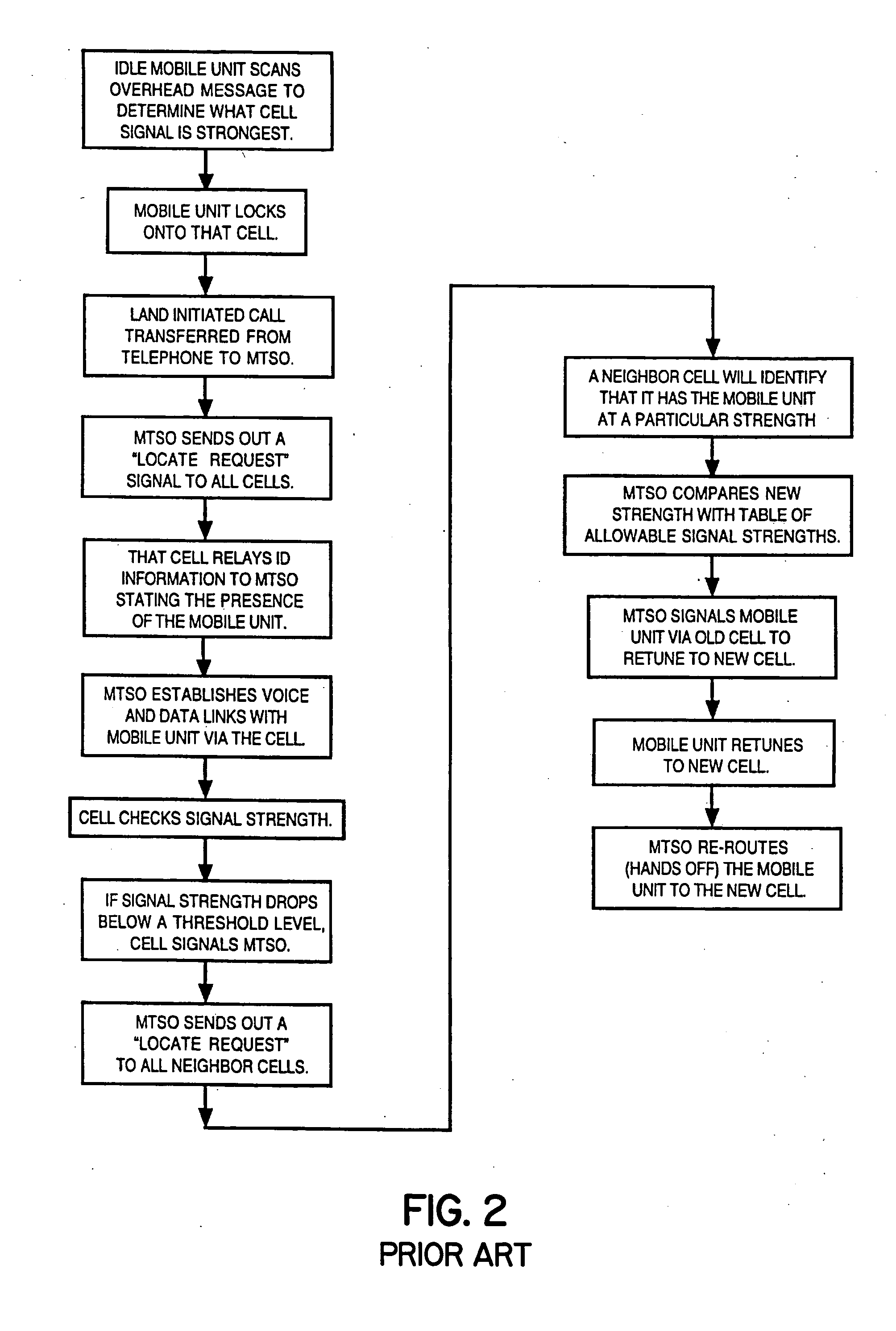Cellular telephone system that uses position of a mobile unit to make call management decisions
a mobile unit and cellular telephone technology, applied in the field of wireless over the air communication, can solve the problems of insufficient coverage, no coverage, complicated particular geographic area, etc., and achieve the effect of efficient and accurate service to a mobile uni
- Summary
- Abstract
- Description
- Claims
- Application Information
AI Technical Summary
Benefits of technology
Problems solved by technology
Method used
Image
Examples
Embodiment Construction
[0078] A representation of the logical flow that may occur in a wireless communications system incorporating the use of exact geographic location (EGL) for the communication process management decisions is shown in FIGS. 8-10. The communication process management decisions are based on information provided by the communication device (CD) towards the fixed system and to the communications device from the fixed system. The description of a sample communications process (CP) begins upon the powering up of the communicating device and continues until that communications process is completed.
[0079] When a communications device is powered up, block 101, the registration process, block 102 is initiated. The registration process is detailed in FIG. 9. The first step in the registration process, block 102 is to determine the exact geographic location, block 201 of the communications device via either GPS, block 202, signal strength, block 203, Loran, block 204, triangulation or other simil...
PUM
 Login to View More
Login to View More Abstract
Description
Claims
Application Information
 Login to View More
Login to View More - R&D
- Intellectual Property
- Life Sciences
- Materials
- Tech Scout
- Unparalleled Data Quality
- Higher Quality Content
- 60% Fewer Hallucinations
Browse by: Latest US Patents, China's latest patents, Technical Efficacy Thesaurus, Application Domain, Technology Topic, Popular Technical Reports.
© 2025 PatSnap. All rights reserved.Legal|Privacy policy|Modern Slavery Act Transparency Statement|Sitemap|About US| Contact US: help@patsnap.com



